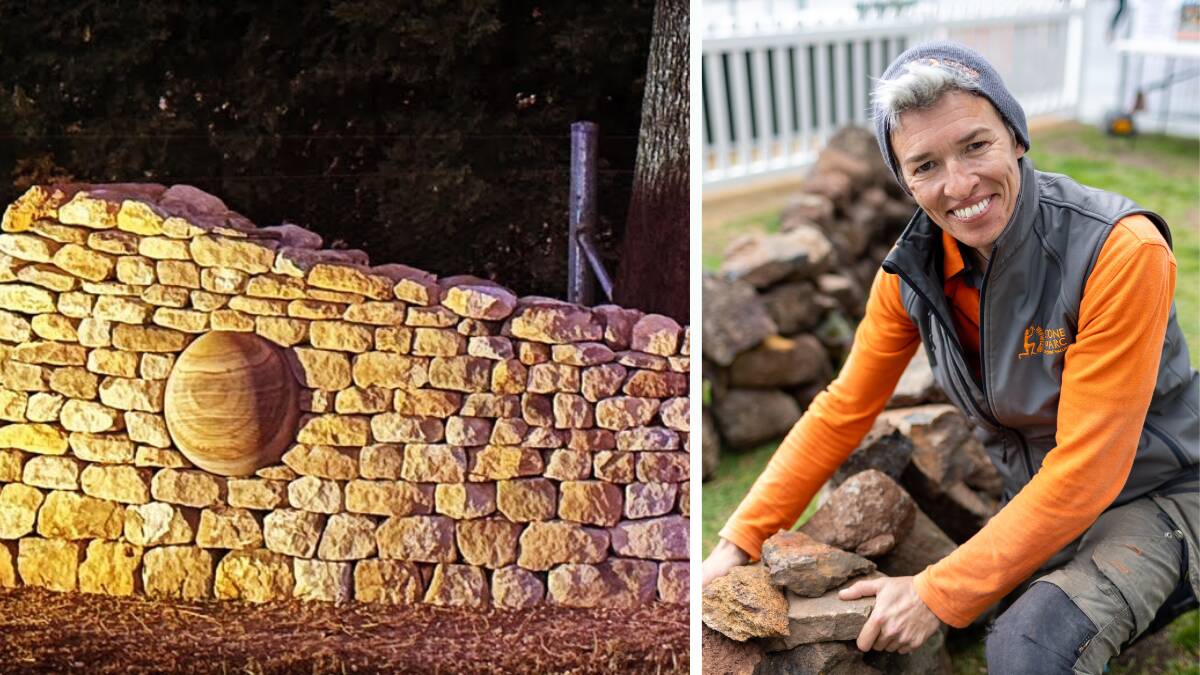Emma Knowles is on a mission to have ancient Aboriginal fish traps estimated to be 40,000 years old recognised as the oldest remaining examples of dry stone walling techniques in the world.
Subscribe now for unlimited access.
or signup to continue reading
Currently, the oldest recognised example is in Scotland, however Ms Knowles said the techniques used by Indigenous people in NSW and Victoria are not only older, but more advanced.
Ms Knowles is a dry stone waller based in Wellington, and known for her business, Stone of Arc, which she set up in 2017.
But Ms Knowles wasn't always into dry stone walling - she emigrated to Australia from Yorkshire, England, to work in the mental health industry.
But it didn't "nourish" her soul, and she went to work on a farm in Wellington - only to be asked, because of her accent, to help build a dry stone wall. She found it a good fit and now she has a booming business restoring heritage walls and building new artful pieces, and teaching the technique to others.
She said she was led to believe the oldest evidence of dry stone wall in the world was in Skara Brae, in Orkney, Scotland.

"So I went up to Scotland and it is indeed a magnificent site and it's dated at 5,000 years old," Ms Knowles told the Daily Liberal.
"But then I became aware of the stone [fish] traps and the aqua systems across Australia that have been built by Aboriginal people.
"I went up to Brewarrina to look at the fish traps and it quickly became obvious the way the stones were engaged that it was dry stone walling that had been utilised to construct these fish traps that were estimated to date back 40,000 years.
" ... What I'm very keen to do is raise the profile of the Brewarrina traps because not only are they incredibly old, the engineering that is required - to use a stone construction technique in the river that goes through flood and fire - it's beyond belief."
Ms Knowles said the Brewarrina fish traps, known as Ngunnhu, are more advanced in engineering technique than the Egyptian pyramids or the Inca temples in South America.
"It's amazing that even though there's been very little maintenance in the last 100 years, there's been paddle steamers and weirs and cattle and absolute lack of protection for them, [the fish traps are] still there today to be seen," she said.
Ms Knowles is one of only six female Dry Stone Walling Association UK Advanced Dry Stone Wallers in the world, and the only advanced waller operating in the southern hemisphere.
She demonstrated dry stone walling techniques, and presented on the Brewarrina fish traps, to international audiences at the ICOMOS GA2023 Traditional Heritage Trades Fair in Sydney on Friday, September 8.
Ms Knowles said she enjoyed being around others showcasing traditional trades who "have a lot of passion" for what they do.
"I think it's the fact that we live in such a fast kind of throwaway lifestyle, to be involved in something that is using natural materials, that tends to be a slow, careful methodical process, to produce something that will be incredibly durable and long lasting," she said.
IN OTHER NEWS
"There's something very authentic about it and I think the public reaction is huge. The interest in that side of things seems to interest every demographic as well."
Ms Knowles will be leading a range of dry stone walling workshops at Stone of Arc in Wellington in September, October and November 2023, and March 2024. Find out more at stoneofarc.com
Reading this on mobile web? Download our news app here. It's faster, easier to read and we'll send you alerts for breaking news as it happens.


